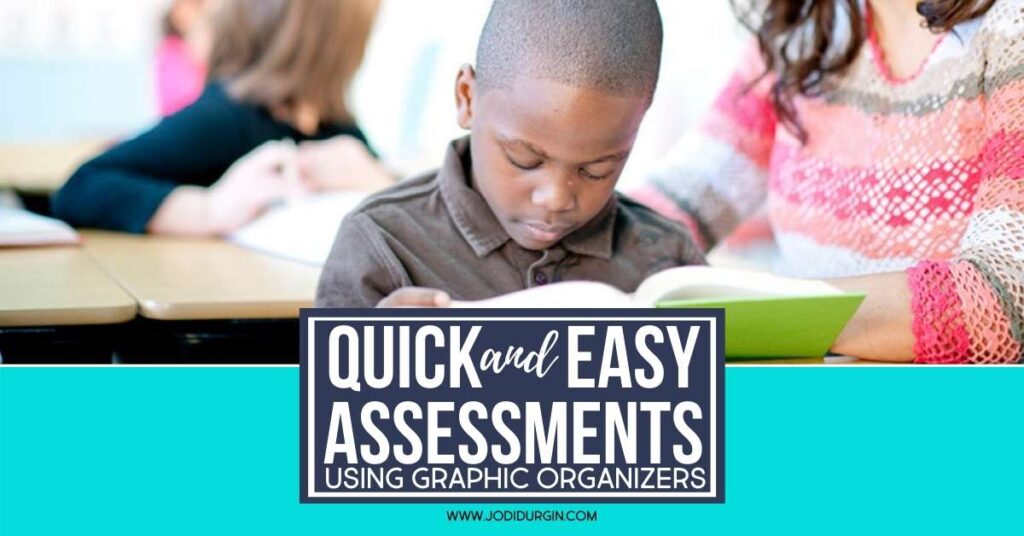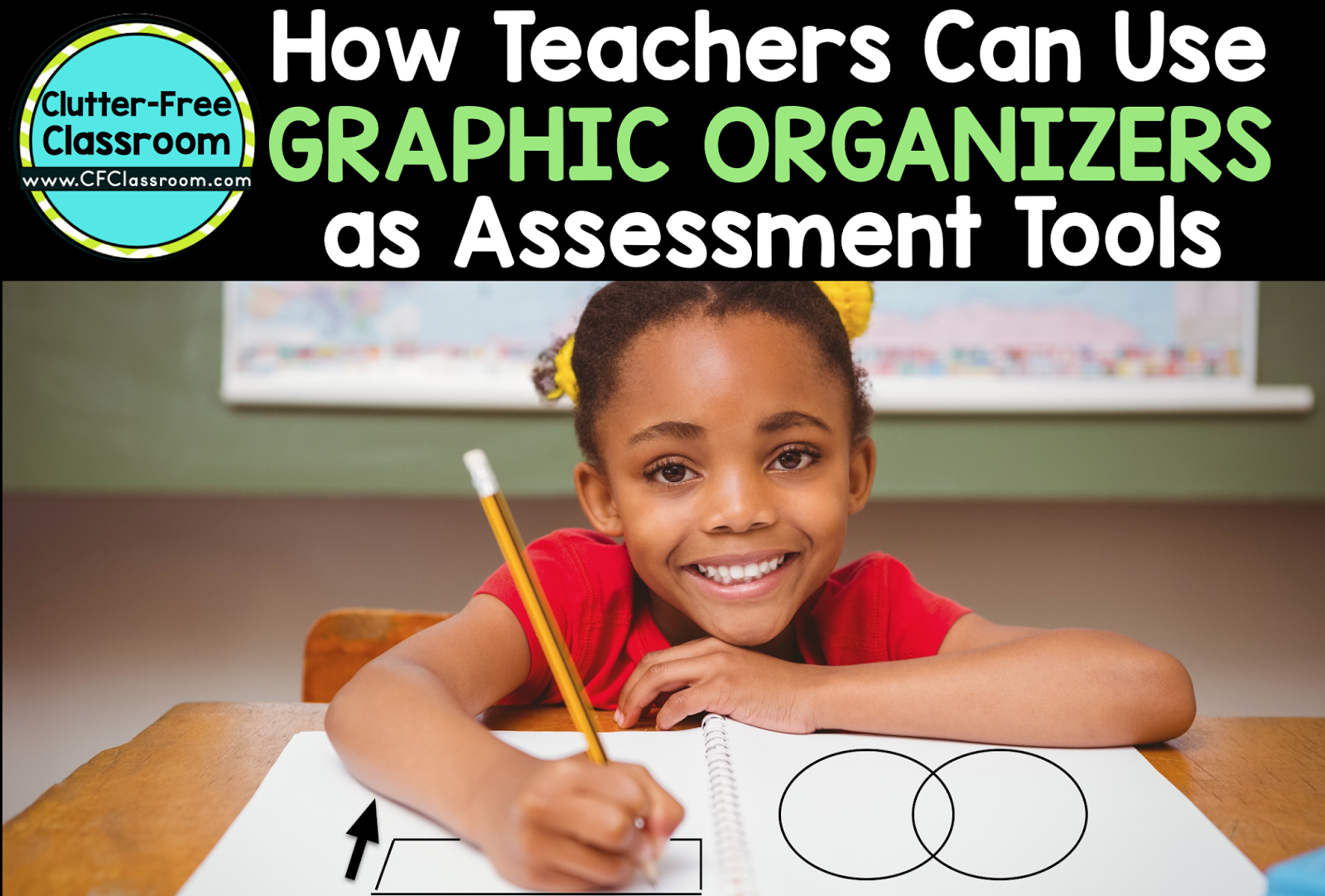You likely already know that graphic organizers are great tools for improving reading comprehension and writing skills. However, you may not be as familiar with how they can be used as powerful evaluation tools. Using graphic organizer for assessment is one of the best ways to offer a differentiated assessment.
It’s true! Because graphic organizers are a more creative assessment of knowledge than simply answering true or false questions or showing memorization skills they are ideal assessment tools. Graphic organizers allow demonstration of higher level thinking skills. Drawings and diagrams appeal to the visual learner and help to better serve your diverse group of students. Teachers can use the organizers to assess learning in many ways. Learn all about using graphic organizers for assessment below!

Why is it Important to Differentiate Assessment?
Have you heard this phrase, “Teachers are asked to differentiate learning, so why is testing standardized?” It is meant to be funny, but sadly its true. Too often kids are provided with modifications and differentiated instruction while learning yet are then asked to perform the same task as their peers during a test. Here is why it is important to differentiate assessments.
- Not all students test well. There are lots of children who demonstrate proficiency of skills during the practice phase of learning, but perform poorly in a testing situation.
- The goal of assessments is not to trick students. Assessment should simply be an opportunity for the students to “show what they know.” For this reason familiarity in the format is important.
- In today’s world of data collection it is only fair students be provided with multiple opportunities to demonstrate their abilities. Since the scores from assessments now go beyond a report card and instead may influence placement in groups and determine eligibility for services its important to be thorough in examining a child’s true abilities.

How to Use Graphic Organizers for Knowledge Assessment
Graphic organizers are a great way to assess knowledge. Below are some suggestion for how to do it!
- Embed graphic organizers into tests and quizzes as an additional opportunity to showcase knowledge.
- Students can use them to analyze a video or reading passage. This will show the teacher how well the student understood the material.
- Have students complete a graphic organizer in preparation for a literature discussion or book talk. Observe how the student orally communicates his/her understanding and insights.
How to Use Graphic Organizers for Written Assessments
Completing an organizer can help students plan their writing when answering open response questions. This will make the written component much more coherent, decrease student anxiety, and improve test-taking time management. Ultimately the goal is to have the students create and complete their own organizers when required to respond to a question in writing. Here’s how to encourage them to do that.
- Model how to select and use the appropriate graphic organizer to respond to a text-based question.
- Provide practice opportunities for the students to work towards mastery.
- During teacher-planned assessments, always provide the students with an organizer and have them complete it prior to writing their response.
- Discuss how to select the best organizer for different types of questions.
- Model and provide explicit instruction on how to create the organizers on their own.
- Present the students with situations to do so independently.
Graphic Organizer Assessment Resources
I have created a collection of graphic organizers. The themed topics increase student interest and motivation. Best of all, they can be used with ANY book. This allows you to use the same organizer multiple times. Students may complete the same organizer, but with different books at their own reading level for simple modify learning. Each packet includes 20 graphic organizers designed to be use to teach…
- predicting
- sequencing
- story mapping
- summarizing
- character traits
- schema
- brainstorming/webbing
- identifying facts
- main idea and supporting details
- non-fiction text features
- gathering information
- comparing and contrasting
- cause and effect
- fact and opinion
- note taking
- vocabulary and author word choices
- visualizing
- making connection
- sorting information
- report writing
- retelling
In closing, we hope you found this post about using graphic organizers for assessment helpful! If you did, then you may also be interested in these posts:



